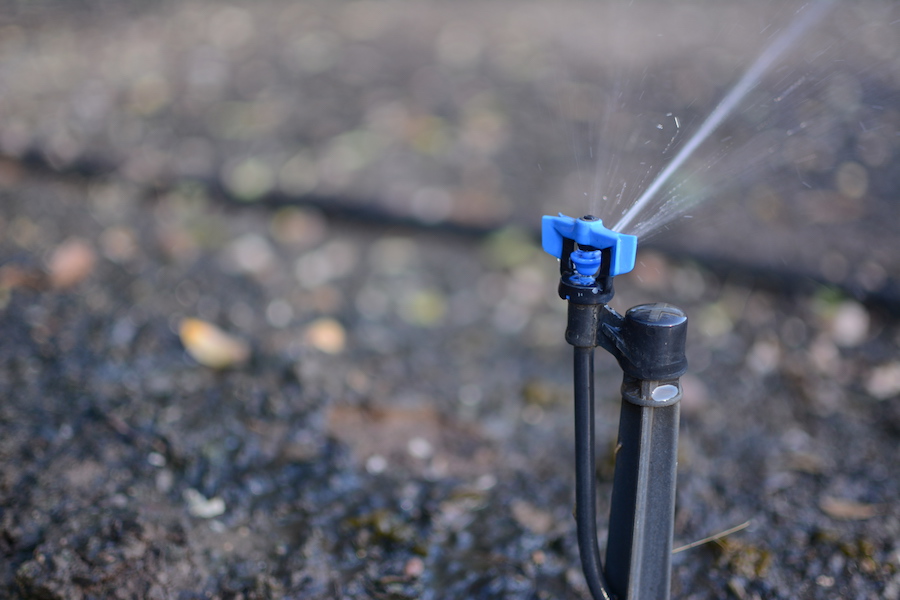
Water Action Committee sets 22 percent water conservation goal
Last year, the UC Davis campus saved 471.5 millions gallons of water, according to the UC Davis Water Dashboard. To improve this number even further, the UC Davis Water Action Committee (WAC) set a goal to reduce water usage 22 percent from March 2015 to October 2016.
According to the Drought Response Action Plan, written by WAC in 2014, below-average snowfall and precipitation caused loss of water at a rate that an average amount of precipitation could not combat.
“While [it] has eased a bit in California compared to last year, we are still in a drought,” said Camille Kirk, assistant director of sustainability and WAC chair. “We still need everyone to be mindful about their water use.”
Before the state’s call for emergency regulation of water usage in 2015, there were already efforts to save water underway at UC Davis. In order to regulate water use on campus, Kirk and the committee collaborated with many teams from different facilities to discuss smarter ways each facility can conserve water.
“A couple of years before I came to campus, all the resident halls were replaced with low flow and flush fixtures,” said Jenni Porter, the Student Housing sustainability coordinator.
Porter also listed UC Davis’ dining services’ best practices before 2015, like trayless dining and water-efficient dishwashers, as proof of the campus’ conservation efforts.
Other facilities on campus also carried out techniques to conserve water. Facilities Management had retrofitted about one-third of the campus’ fixtures with the low-flow version as early as April 2014, according to the Drought Response Action Plan.
In 2015, by the state’s official issue, all small water suppliers — including the UC Davis campus — were required to reduce their water usage by 25 percent from the 2013 numbers.
“We achieve[d] a 25.7 percent reduction. We exceeded the goal,” Kirk said. “This year, the governor and the Water Board said we’re still in a drought. People did take conservation seriously, so the targets are adjusted a little bit — they’re adjusted down.”
Regardless of the regulation adjustments, the committee still wanted to set a conservation goal for the campus.
“We need[ed] to set a conservation goal for the campus because we cannot let up on our progress,” Kirk said.
The cooling tower project — which uses treated water from the campus’ sewage treatment plant instead of well water — was a factor used towards achieving this goal, along with fixing old water fixtures like toilets, urinals and sink faucets for more efficient water conservation. The campus landscape is also gradually adapting to better handle a drought.
“The Arboretum itself was already in good shape and served as a model of water conservation for the campus,” said Andrew Fulks, assistant director of Arboretum and Public Garden.
Fulks’ team worked alongside Grounds and Landscape Services to carefully select which areas of the arboretum would receive the most water.
“We looked at where turf areas were most used, so places like the Quads, or the Intramural fields, and […] areas around buildings and some smaller courtyards where you don’t have as much [foot traffic],” Fulks said. “Those areas might get a more dramatic water reduction.”
One of the facilities on the forefront of water conservation at UC Davis is Student Housing, according to Porter. For Porter and her sustainability team, drought outreach and education starts with the residents. There are also programs geared toward promoting individual efforts to conserve water.
“We found out that [the programs] have worked out pretty well and we’ve seen a reduction in water use,” Porter said. “It’s an ongoing effort to make the residents aware that California is in a severe drought and we need their help in conserving water.”
The team, with help from the Energy Conservation Office, created a competition among all Residence Halls called “The Energy and Water Challenge” last year, which will start again this Fall.
“They developed a leaderboard online that residents can go to during the challenge,” Porter said. “They can go and they can look and see their energy saved and their water saved.”
According to Porter, outreach programs to develop behavior efforts such as educational tablings, movie events and arts and crafts programs, will continue to take place in the coming years.
“For example, last year they [had] a program where they make plant terrarium,” Porter said. “We get them to come to the programs to make a terrarium, but the message is overall water saving.”
Around campus, especially in restrooms, there are notification signs that explain how to report broken fixtures and water leaks. These signs not only promote, but also depend on individual efforts.
“It’s important for people to take action when they can,” Kirk said. “‘Am I using water the best way? Are there better ways for me to achieve what I want to achieve?’ Those are the kinds of questions that we want people asking themselves.”
Written by: Temperance Tran – science@theaggie.org



